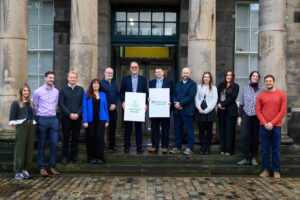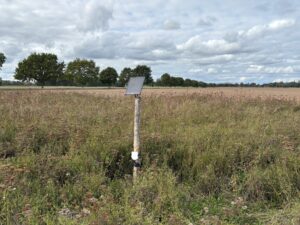The People’s Assembly for Nature is a citizens’ group comprising 103 people from varied backgrounds, values and experiences. In March, their work led to the People’s Plan For Nature. We quiz member Fawad Abbasi, a geography student at the University of Manchester, about joining the organisation and its work to date.
How did you first hear about People’s Assembly For Nature, and what appealed to you about trying to get involved?
I first heard about it through a letter in the post. I was really intrigued – being a part of the first National Assembly on what can be done to restore and renew nature in the UK was just such a fantastic opportunity.
I am a Geography student and at the time, I was studying a module on environmental policy. I had just recently learnt about the increasing use of citizens assemblies as a means for proper consultation in line with the democratic process and to make policy more appropriate – so it felt like it was meant to be.
Describe the application process for a place in the Assembly?
After receiving the letter, which went to 33,000 randomised UK postcodes, it was a very simple, easy process to apply for the Assembly. There were a few questions asking for personal details and then one on our level of engagement with nature. After registering my interest, I was then selected to be one of the 100 people that made up the assembly. The selection was weighted to make sure that the group was as representative of the UK population as possible.
How did the Assembly begin to develop the People’s Plan for Nature?
The Assembly took place over four weekends. The first and the last were held in Birmingham, and the two in between were remote over Zoom. Each weekend, we looked at a different critical aspects of nature in the UK – biodiversity, current policy and legislation, farming, food, seas etc. We were educated by leading academics and researchers as well as farmers, businesses and community elders. We then had deliberations amongst each other in groups of around 10, aided by facilitators. The facilitators were the backbone of the Assembly, as we, a demographically representative group of people from across the UK – including farmers from Northern Ireland, mums from middle England, millennials, and the nature-disinterested young people like me – all had a variety of views, sometimes conflicting, but the facilitators helped us harmonise into a shared vision.
Please outline contents of the People’s Plan, and any aspects you are personally proud of.
The contents of the Plan were grouped into eight themes covering leadership action, farming, food, marine protection and management of waterways, amongst others. You can read a summary of the plan here.
I think what I like most, is that for each theme, various calls to action are made to those from varying scales of influence, from national government to businesses to individuals and communities – it holds everyone accountable in the nature crisis to make the right choices.
For example, on the theme of waterways management, there is a call to action on national government to enforce current regulation to halt the release of sewage in waterways, whilst also engaging individuals and communities to understand the importance of the wide scale restoration of these areas as part of this very process. My favourite recommendation of the Plan is the call for a permanent, UK-wide Assembly for nature so that nature is represented in decision making, and able to scrutinise, challenge and hold to account government leadership on actions that impact on nature.
How important do you feel organisations like the Assembly are, and how much influence do you feel they can have?
I feel strongly that citizens assemblies aren’t just important, but essential to the democratic process. They empower people to feel they are being represented and that they have a voice, which is important in a time where most people lack trust in policy makers to make the right decisions on their behalf. The shared visions, goals and calls to action that result at the end of this process have the power to wield a lot of influence. If they do is another question, depending on if policymakers have people at the heart of their policies or not.
More on assemblies:
Local authority assemblies are empowering community net-zero strategies
Image: People’s Assembly for Nature
















